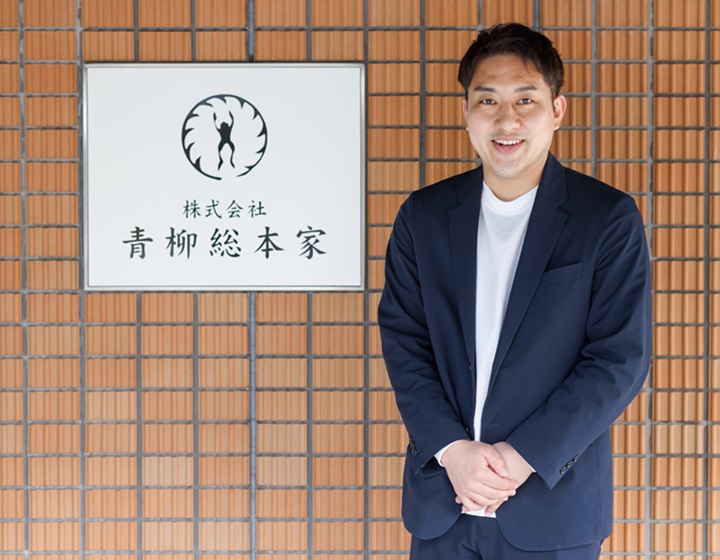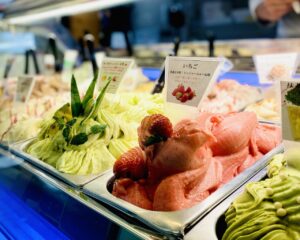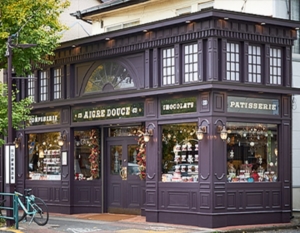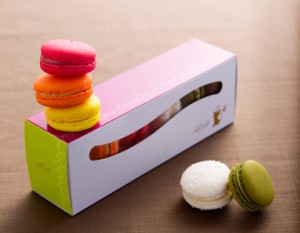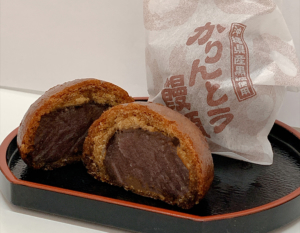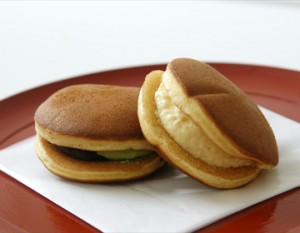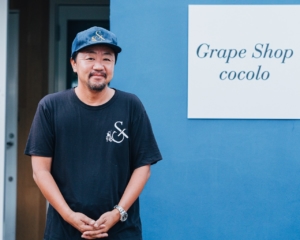Aoyagi Uiro” by Aoyagi Sohonke is one of the most popular Nagoya souvenirs, but it is said to have its roots in China. How did Uiro originate and how did it become popular as a standard Nagoya souvenir? We will look at its roots, the people behind the expansion of the brand, and the Aoyagi Sohonke’s new challenges.
Uiro, introduced from China over 600 years ago

What do you think of when you hear the word “Uiro”? Many people may think of a Japanese confectionery with a smooth appearance, but not a few younger generations have no idea what it is.
Uiro is a Japanese confectionery that has long been loved as a souvenir from Nagoya, Aichi Prefecture. It is made by steaming rice flour, bracken flour, wheat flour, and other ingredients mixed with sugar, water, and starch. Since it is one of the first souvenirs from Nagoya, locals tend to think that it originated in Nagoya, but in fact, it is said to have its roots in China.
It was brought to Japan in the Muromachi period (1336-1573) by a man named Chen Yan-yu, who was well versed in Chinese medicine (at the time, the Yuan dynasty) and was in charge of procuring medicines. After Yuan was destroyed by the Ming Dynasty, Chen went into exile in Japan. When he became a naturalized Japanese citizen, he took the name Chen Uiro, based on his position in the Yuan dynasty, and the name Sotoro family became firmly established. The medicine that Chen, a skilled physician, began to sell in Japan became well known for its efficacy, and at the invitation of then shogun Ashikaga Yoshimitsu, his son, Chen Gairo Dainen Zongqi, moved to Kyoto. It is said that the name “Uiru” is derived from a confectionery that was served as a tea set to entertain the Imperial Court, or from a confectionery made to soften the bitterness of the medicine.
Later, the Sotoiro family was invited by Soun Hojo, who built a castle in Odawara, and moved to the Odawara castle area. Since then, they have continued to make medicine and sweets in Odawara, and today, Uiro is still passed down in Odawara Castle Town as “Uiro Corporation” and Uiro is also made in other parts of Japan.
After being sold standing in Nagoya Station and on train platforms, it has become a standard souvenir.

The first such place in Japan was Odawara City in Kanagawa Prefecture, but why did UIRO become known as a standard Nagoya souvenir? The Aoyagi Sohonke’s efforts are hidden there. Aoyagi Sohonke was originally founded in 1879 as a steamed yokan (sweet bean jelly) business. Later, the second generation learned how to make UIRO in Tokyo, and began to produce UIRO as well.
The turning point came when Tamehiko Goto, the third generation of the company, decided that he wanted more people to enjoy UIRO, which until then had been packaged in simple wrappings and had an expiration date of the next day or the same day, and established production and packaging techniques to make it last longer. As a result, Tamehiko began to sell Uiro at JR Nagoya Station (then Japan National Railways) and on platforms for the first time. This was the beginning of Uiro becoming a Nagoya specialty.
The effort also brought opportunities. Two years later, in 1964, the Tokaido Shinkansen began service. In addition to sales inside the stations and on platforms, only one store, Aoyanagi Uiro, obtained permission to sell Uiro on board the train, thus accelerating its presence as a Nagoya souvenir.
Rice flour is the main ingredient of Uiro in Nagoya

Uiro is actually a specialty not only in Odawara and Nagoya, but also in Ise City, Mie Prefecture, Yamaguchi Prefecture, Tokushima Prefecture, and other areas, with ingredients and characteristics varying from region to region. In other words, if it is made by adding sugar or water to starch and hardening it, it belongs to the Uiro category. Uiro in Nagoya is made by kneading rice flour with sugar, starch and water, and steaming it. In Yamaguchi Prefecture, bracken flour is added, and in Mie Prefecture, a higher percentage of wheat flour is used. Yokan is sometimes mistaken for yokan, but yokan is a Japanese confectionery made by pouring red bean paste (mainly made from azuki beans) into a mold and hardening it with agar (agar). They are very similar, but not the same.
Because of the simplicity of the ingredients, the experience of the craftsman comes into play. Aoyanagi Uiro uses domestically produced rice flour, but the taste and texture of the Uiro varies depending on the weather and temperature of the year when the rice is harvested. The artisans carefully assess these differences and prepare the dough to achieve the ideal taste and texture. After one hour of steaming in the steamy air, the Uiro is characterized by its soft, chewy texture and elegant sweetness with a hint of rice flavor.
Aoyagi Sohonke’s best-selling product is the orthodox Uiro, made with white sugar, but there are many variations, such as using brown sugar or Wasanbon instead of sugar, or adding Shiraoi Daiginjo, a famous Japanese sake made in Tokoname City, Aichi Prefecture.
Frog buns” featuring the logo

The “Frog Manju,” now one of the company’s signature products, was created in 1989 to commemorate the 110th anniversary of the company’s founding. The frog jumping on a willow tree in the Aoyagi Sohonke logo represents the company’s indomitable spirit of challenge, and the frog in the logo is the motif of this product. The inside is filled with a sweet bean paste, and the frog’s eyes are branded by hand by a craftsman. Although the product did not sell well when it was first sold, sales have been increasing every year. The cute expression on the frog’s face is what keeps consumers coming back for more.
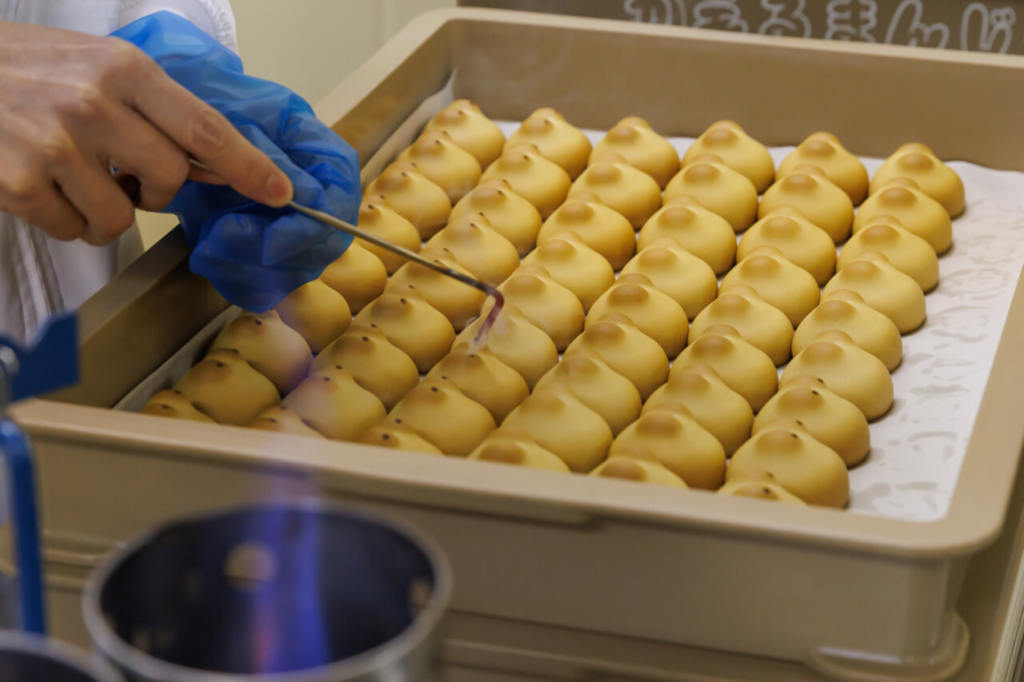
Aoyagi Sohonke had established its position as a representative of Nagoya souvenirs, but when the Corona disaster discouraged people from going out, sales were severely damaged. Brainstorming within the company to see if the company could expand its business beyond souvenirs, the company came up with “travel, business trip, safe frog,” and “happiness, great fortune, lucky frog,” a combination of auspicious words. The added value succeeded in expanding needs. We also wondered if we could send a message to students preparing for entrance examinations as “take on the challenge without giving up. The company thought, “Why not send a message to students preparing for entrance examinations as well? The spirit of fortitude has been passed down from generation to generation.
At the KITTE Nagoya store, directly connected to Nagoya Station, the gateway to Nagoya, a dessert called “Frog Milk Bath,” which looks like a frog bun in a cup of milkshake, has captured the hearts of women.
A variation of this frog manju that gained popularity was the “kerototozzo,” which was released in 2021. It is a confectionary that blends the Japanese and Western styles by combining maritotozzo, which was popular that year, and frog buns. Since Maritozzo was already a hot trend, the development of the product proceeded at a rapid pace under the leadership of Toshitaka.
The initial idea was to commercialize the product within a month and sell it only for a limited period of about three months,” but it became a huge hit, selling more than 10,000 units in the first month of sales. Kerotso became a standard product, and in addition to the standard product mixed with cream and cream cheese, variations of “Strawberry,” “Rum Raisin & Walnut,” and “Cream Cheese & Lemon” were also introduced. It will continue to be one of Aoyagi Sohonke’s signature products in the future.
Before the store opened, people lined up day after day for the “Slime Uiro”.
Toshitaka’s new challenges are endless. In his main business, UIRO, he wants “people who have never heard of UIRO before to recognize and try it. In 2022, the “Slime Uirou” Uirou, a limited-time-only item, was developed that blends the world of the “Dragon Quest” video game. In addition to the standard Uiro, the set includes three collaboration-only flavors: mikan (mandarin orange) and kiwi (kiwi). In addition to the flavors, the pop appearance of the Uirou, which looks as if it came out of the world of Dragon Quest, attracted a lot of attention, and people lined up in front of the store even before the store opened.
Looking overseas in the future

If rice cakes and rice are acceptable in a country, there may be opportunities overseas. In Japan, there may be a new way of eating Uiro that overturns the conventional image of Uiro. Toshitaka’s challenge is likely to gain momentum as he says, “I would like to think about it without being stuck to the traditional taste and appearance. Perhaps the opportunity for change that Tamehiko III was able to bring about is now at hand.



